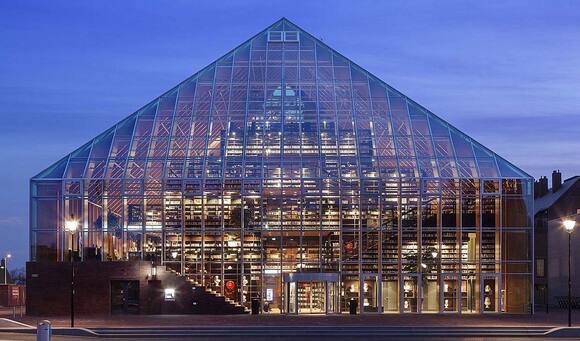
credits: Nissewaard Council
In Spijkenisse, The Netherlands, a large-scale investment in the reinforcement of social and cultural structures and the renewal of the built environment has transformed the city centre into the ‘living room’ of the New Town.
Spijkenisse (since 2015 part of the municipality of Nissewaard) is a new town planned in the second part of the 20th century. The town centre, built in the first part of the 1980’s, lacking a nice atmosphere and a mix of functions, became soon unattractive. Since the years 2000 the municipality decided to focus on quality, rather than quantity, leading to large-scale investments in the reinforcement of social, societal and cultural structures and the (physical) upgrading of the city centre: space for shopping, bars and restaurants have sprung up, and building façades and pavements were renewed. Equally important, a new theatre and a new library were built. These both have a distinctive architecture, and were designed by top-class architects. They are not only cultural centres, but also serve as places for inhabitants to meet and have become iconic landmarks for Spijkenisse, that formerly often got described as ‘boring’. To preserve the appeal of the town centre, a so-called business investment zone was set, in which every (real estate) owner and every user (shopkeeper) pays an obligatory tax, serving collective goals such as promotion, safety and decoration.
Along with this commitment to turn the city centre into the ‘living room’ of the town, the City Council, together with the inhabitants and other stakeholders, has transformed an empty shop into a place for the community: a place to meet, to get informed and present ideas; a place for creativity.
- Co-create the city: creative and shared solutions to contemporary urban challenges
- Innovative economic models to city-making
